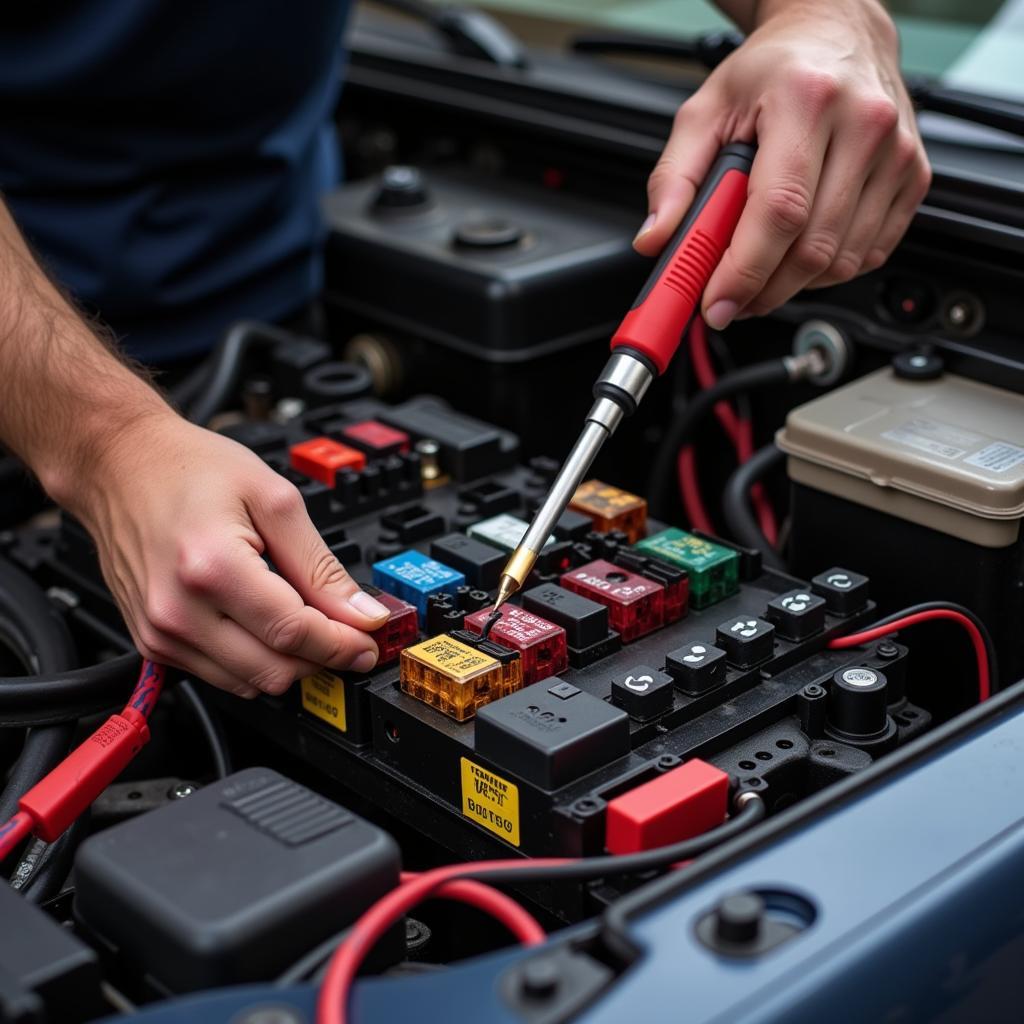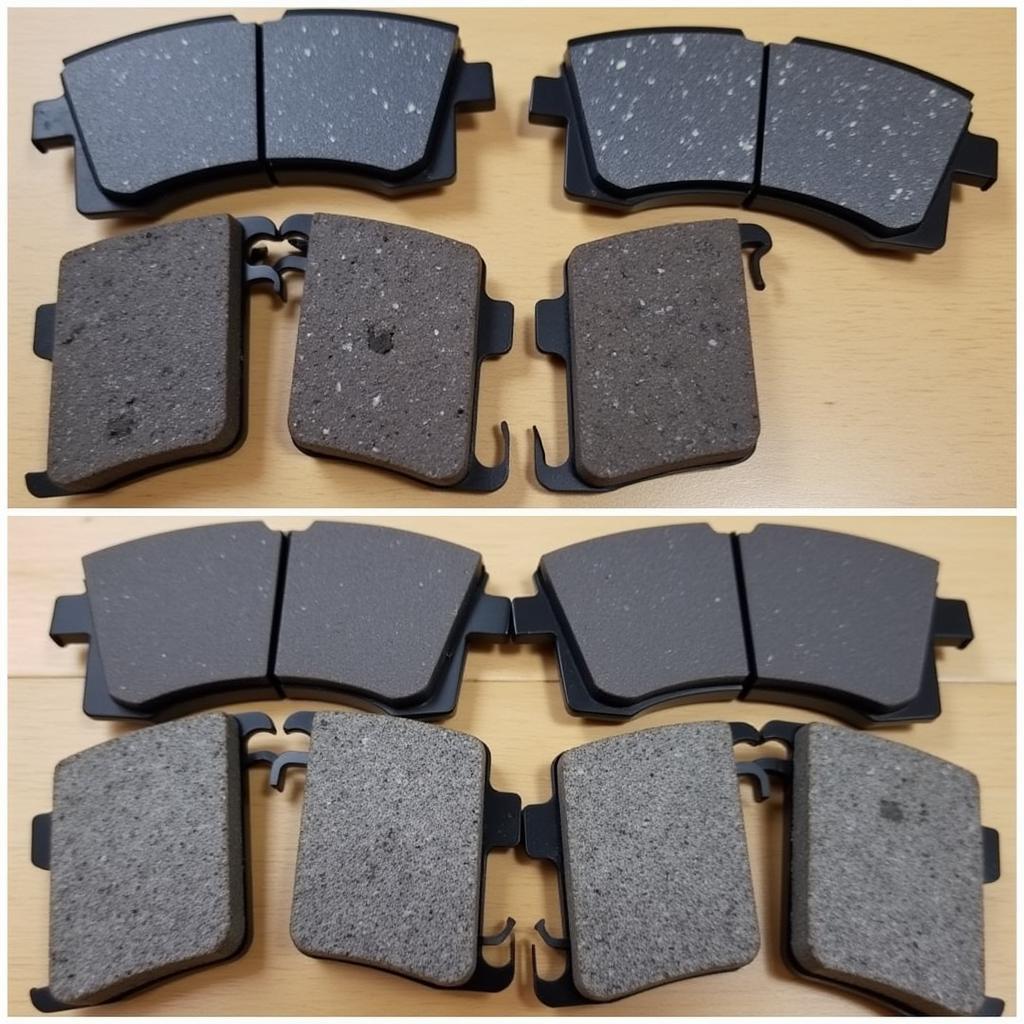The brake pad warning light on your BMW Mini is a crucial safety feature, alerting you when your brake pads are nearing the end of their lifespan. However, knowing how to turn off brake pad warning light BMW Mini after replacing the pads is essential to avoid unnecessary distractions. This article provides a comprehensive guide on addressing this issue, covering everything from diagnosis to solutions. We’ll delve into the various causes, DIY solutions, and when professional help is necessary.
If your BMW Mini’s brake pad warning light illuminates, it’s crucial to inspect your brake pads as soon as possible. Ignoring this warning can lead to significant safety risks and costly repairs down the line. Sometimes, the light might appear due to a sensor malfunction or a simple software glitch. Regardless, understanding the underlying cause is the first step to resolving the issue. In some cases, you can clear the warning light yourself, while others require professional diagnostic tools and expertise. For more information on brake warning lights in general, you can refer to this helpful guide: brake warning sign.
Understanding Your BMW Mini Brake Pad Warning Light
Why is My Brake Pad Warning Light On?
The most common reason for the brake pad warning light is worn-down brake pads. The sensors embedded within the brake pads trigger the light when they detect a low pad thickness. However, other factors like faulty sensors, wiring issues, or even a low brake fluid level can also illuminate the warning light. Don’t panic; identifying the root cause will guide you toward the appropriate solution.
What Happens if I Ignore the Warning Light?
Ignoring a persistent brake pad warning light can lead to severe consequences. Driving with worn brake pads compromises your stopping power, increasing the risk of accidents. Furthermore, continued driving with thin pads can damage the brake rotors, leading to significantly higher repair costs.
DIY Solutions: How to Turn Off the Brake Pad Warning Light
Checking Your Brake Pads
Begin by inspecting your brake pads visually. If they appear thin (less than ¼ inch of friction material), they need replacement. This also necessitates resetting the brake pad warning light.
Replacing Brake Pads and Resetting the Sensor
If you’re comfortable with basic car maintenance, you can replace the brake pads yourself. After installing new pads, which typically include new sensors, you’ll need to reset the warning light. This often involves using a specific reset procedure, which can vary depending on the Mini model. Consult your owner’s manual or reliable online resources for model-specific instructions. You might find this resource helpful: 2015 bmw mini brake pad warning light reset.
Checking Brake Fluid Levels
Low brake fluid can also trigger the warning light. Check your brake fluid reservoir; if it’s low, top it off with the correct fluid type specified in your owner’s manual. However, consistently low brake fluid can indicate a leak, which requires professional attention. You can learn more about brake fluid warning lights here: bmw e90 brake fluid warning light.
Inspecting Brake Sensors and Wiring
Sometimes, a faulty sensor or damaged wiring can trigger the warning light even with sufficient brake pad thickness. Carefully inspect the wiring connected to the brake pad sensors for any signs of damage or corrosion. A multimeter can help test the sensor’s functionality. If you suspect a sensor or wiring issue, consider consulting a professional.
When to Seek Professional Help
If you’ve tried the DIY solutions and the warning light persists, it’s time to seek professional assistance. A qualified technician can diagnose the problem accurately using specialized diagnostic tools and perform the necessary repairs. This is especially important if you suspect a complex issue like a malfunctioning ABS module or a software glitch. Learn more about clearing BMW brake pad warning lights: clear brake pad warning bmw.
Remote Diagnostics and Programming
Modern technology allows remote diagnostics and programming for certain BMW Mini models. This involves connecting your car to a diagnostic system remotely, allowing technicians to identify and sometimes even fix software-related issues without physical access to the vehicle.
Conclusion
Knowing how to turn off brake pad warning light BMW Mini involves understanding its various triggers and employing the appropriate solutions. Regular maintenance, including brake pad inspections, is crucial for your safety and the longevity of your vehicle. While some fixes are DIY-friendly, others require the expertise of a qualified technician. Addressing the brake pad warning light promptly ensures a safe and enjoyable driving experience. Ignoring it can lead to more severe problems and costly repairs. For further reading on brake warning lights in different vehicles, check out this resource: renault master brake warning light.
FAQ
-
How often should I check my BMW Mini’s brake pads? It’s recommended to visually inspect your brake pads every six months or 10,000 miles.
-
Can I drive with the brake pad warning light on? While you can technically drive for a short distance, it’s strongly advised against it. Continued driving with worn brake pads can be dangerous.
-
How much does it cost to replace brake pads on a BMW Mini? The cost varies depending on the model and whether you choose DIY or professional service.
-
What tools do I need to replace brake pads myself? You’ll need basic hand tools like wrenches, sockets, a jack, and jack stands.
-
How do I reset the brake pad warning light after replacing the pads? The reset procedure varies depending on the Mini model. Consult your owner’s manual or online resources.
-
What if I replace the brake pads and the light stays on? This could indicate a faulty sensor, wiring issue, or a problem with the car’s computer system. Consult a professional.
-
Can low brake fluid trigger the brake pad warning light? Yes, low brake fluid can trigger the warning light in some cases. Check your brake fluid level and top it off if necessary.



